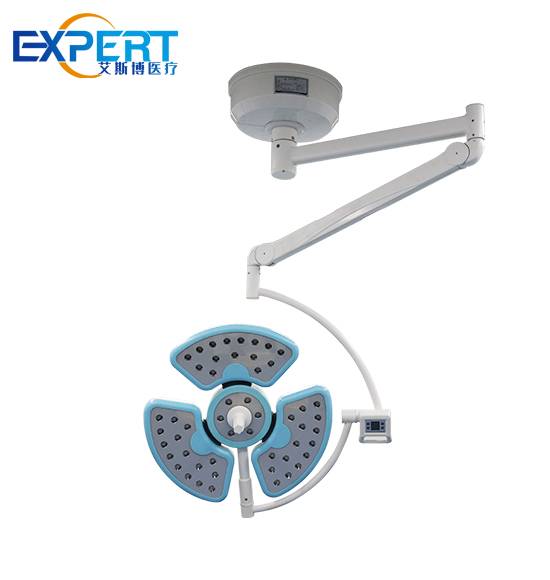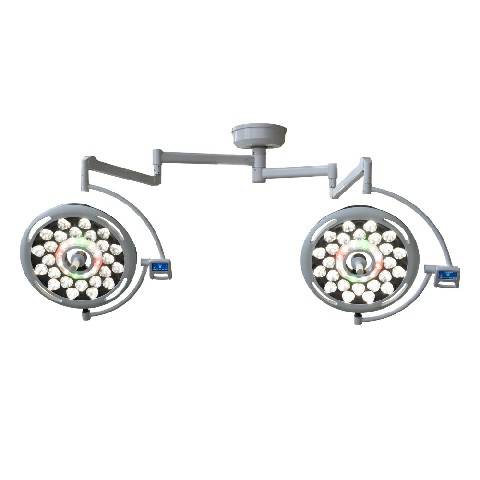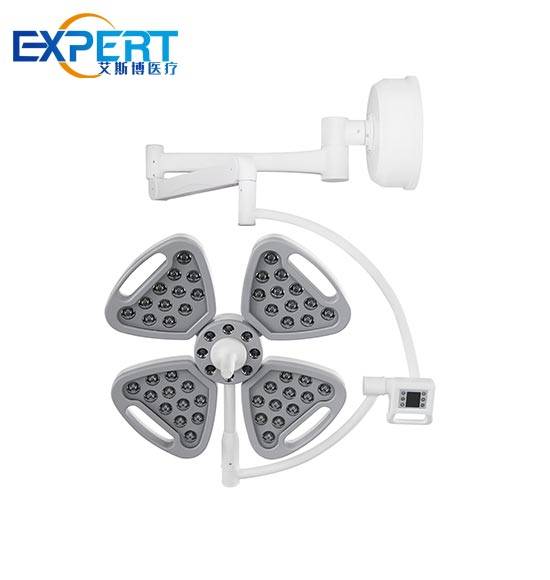Dirección
304 North Cardinal St.
Dorchester Center, MA 02124
Horas laborales
Lunes a viernes: 7:00 a. M. - 7:00 p. M.
Fin de semana: 10 a. M. - 5 p. M.
En el ámbito de la medicina moderna, el sistema de iluminación quirúrgica es un componente fundamental que puede influir significativamente en el resultado de los procedimientos quirúrgicos. Una iluminación adecuada garantiza que los cirujanos tengan una visión clara del campo operatorio, lo cual es esencial para la precisión y la seguridad del paciente. Este blog profundiza en los dos tipos de sistemas de iluminación quirúrgica más populares: LED y halógeno. Exploraremos sus características, ventajas y desventajas para ayudarle a tomar una decisión informada.

Un sistema de iluminación quirúrgica es un elemento crucial en cualquier quirófano. Proporciona una iluminación esencial para visualizar los detalles finos de los tejidos y órganos durante la cirugía. El objetivo principal es proporcionar una luz brillante y sin sombras que pueda penetrar profundamente en las cavidades corporales, ofreciendo una visión nítida sin deslumbrar ni incomodar al equipo quirúrgico.
Existen varios tipos de sistemas de iluminación quirúrgica, pero los dos más utilizados en los quirófanos modernos son:
Sistemas de iluminación quirúrgica LED
Sistemas de iluminación quirúrgica halógena
Cada uno de estos sistemas tiene sus características y beneficios únicos, que exploraremos en detalle.









Los sistemas de iluminación quirúrgica LED han ganado una inmensa popularidad debido a sus numerosas ventajas:
A pesar de sus numerosos beneficios, los sistemas de iluminación quirúrgica LED también tienen algunos inconvenientes:
Los sistemas de iluminación quirúrgica halógena han sido un elemento básico en los quirófanos durante décadas y ofrecen varias ventajas:
Sin embargo, los sistemas de iluminación halógena no están exentos de inconvenientes:

Para proporcionar una comparación más clara entre los sistemas de iluminación quirúrgica LED y halógena, examinemos su rendimiento en función de criterios clave.
| Criterios | Sistema de iluminación quirúrgica LED | Sistema de iluminación quirúrgica halógena |
|---|---|---|
| Eficiencia energética | Alto | Bajo |
| Esperanza de vida | Más de 50.000 horas | 1.000-5.000 horas |
| Brillo y claridad | Excelente | Bien |
| Emisión de calor | Mínimo | Alto |
| Costo | Mayor costo inicial, menor costo operativo | Menor costo inicial, mayor costo operativo |
| Mantenimiento | Bajo | Alto |
| Ajustabilidad | Alto | Limitado |
La selección del sistema de iluminación quirúrgica adecuado depende de varios factores, como el presupuesto, las necesidades quirúrgicas específicas y las preferencias personales. Si bien los sistemas LED ofrecen un rendimiento superior y ahorros a largo plazo, los sistemas halógenos pueden seguir siendo la opción preferida por su precio inicial asequible y la calidad de su luz cálida.
En conclusión, tanto los sistemas de iluminación quirúrgica LED como los halógenos presentan sus propias ventajas y desventajas. Los sistemas LED destacan por su eficiencia energética, durabilidad y excelente calidad de luz, lo que los convierte en la opción preferida en muchos quirófanos modernos. Sin embargo, los sistemas halógenos siguen siendo relevantes gracias a su menor coste inicial y a la calidad de su luz cálida. En definitiva, la elección entre sistemas de iluminación quirúrgica LED y halógenos debe basarse en las necesidades específicas del entorno quirúrgico y las preferencias del equipo quirúrgico. Invertir en el sistema de iluminación adecuado es crucial para garantizar resultados quirúrgicos óptimos y mejorar la atención al paciente.
Los sistemas de iluminación quirúrgica LED suelen durar más de 50.000 horas, mientras que los sistemas halógenos duran entre 1.000 y 5.000 horas.
Las luces LED generalmente son mejores debido a su brillo, claridad y mínima emisión de calor, pero las preferencias pueden variar según el tipo de cirugía y la comodidad del cirujano con la calidad de la luz.
Las luces LED requieren menos mantenimiento en comparación con las luces halógenas, principalmente debido a su mayor vida útil y menor emisión de calor, lo que reduce el desgaste.
Los sistemas LED son más eficientes energéticamente, lo que resulta en menores costos de energía a lo largo del tiempo en comparación con los sistemas halógenos, que consumen más energía.
Sí, muchos sistemas halógenos existentes pueden modernizarse con tecnología LED, aunque puede requerir una inversión inicial.
